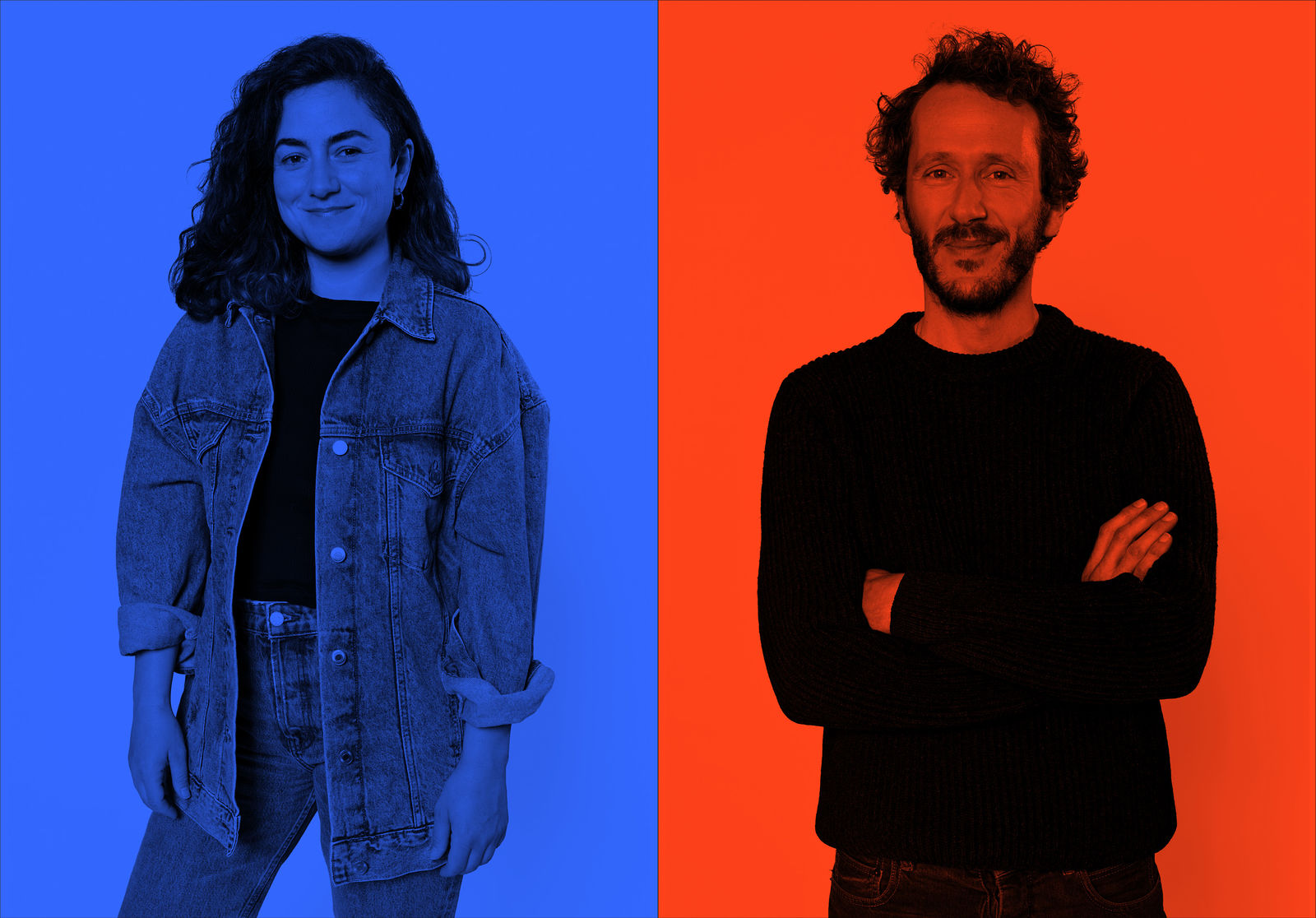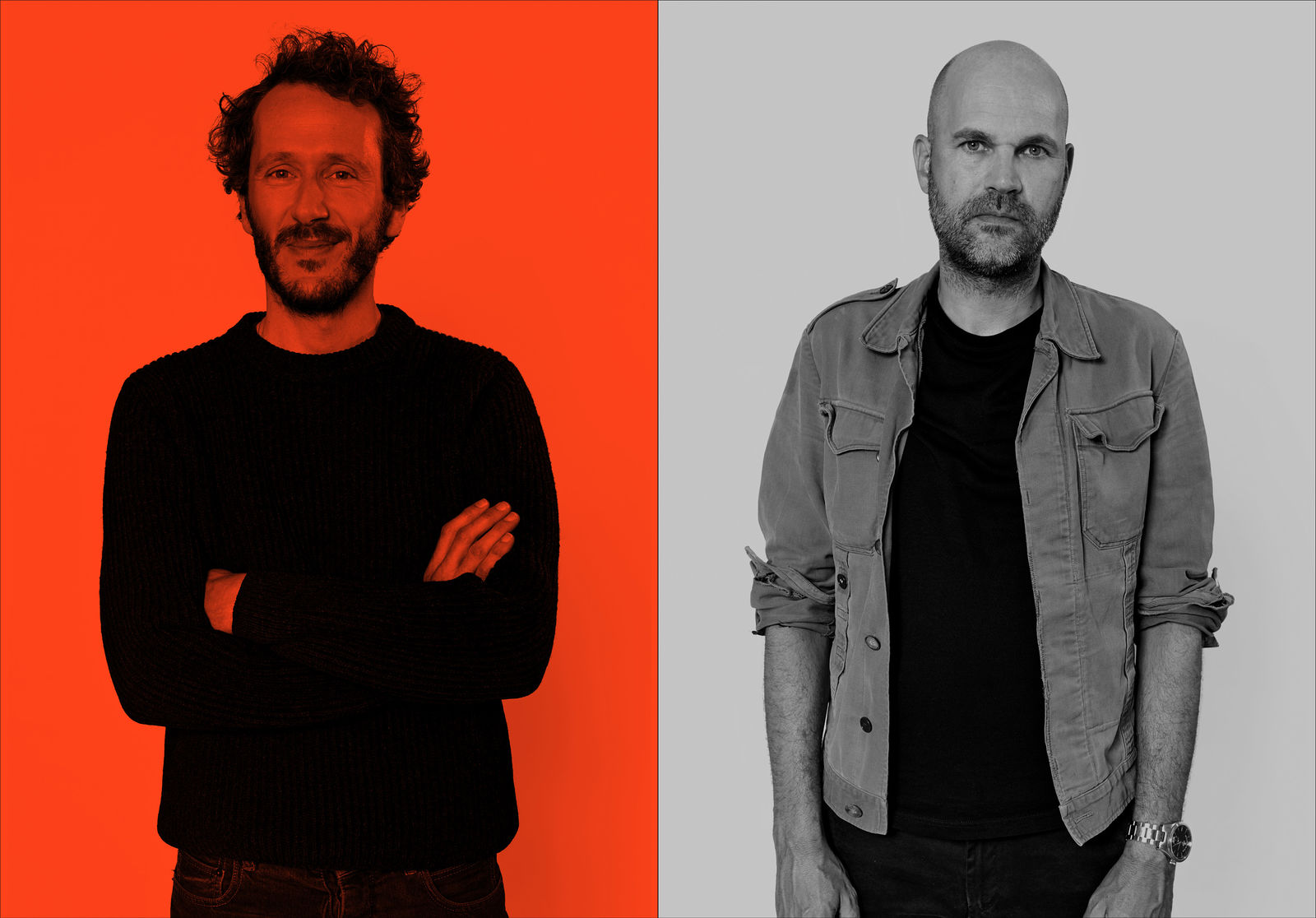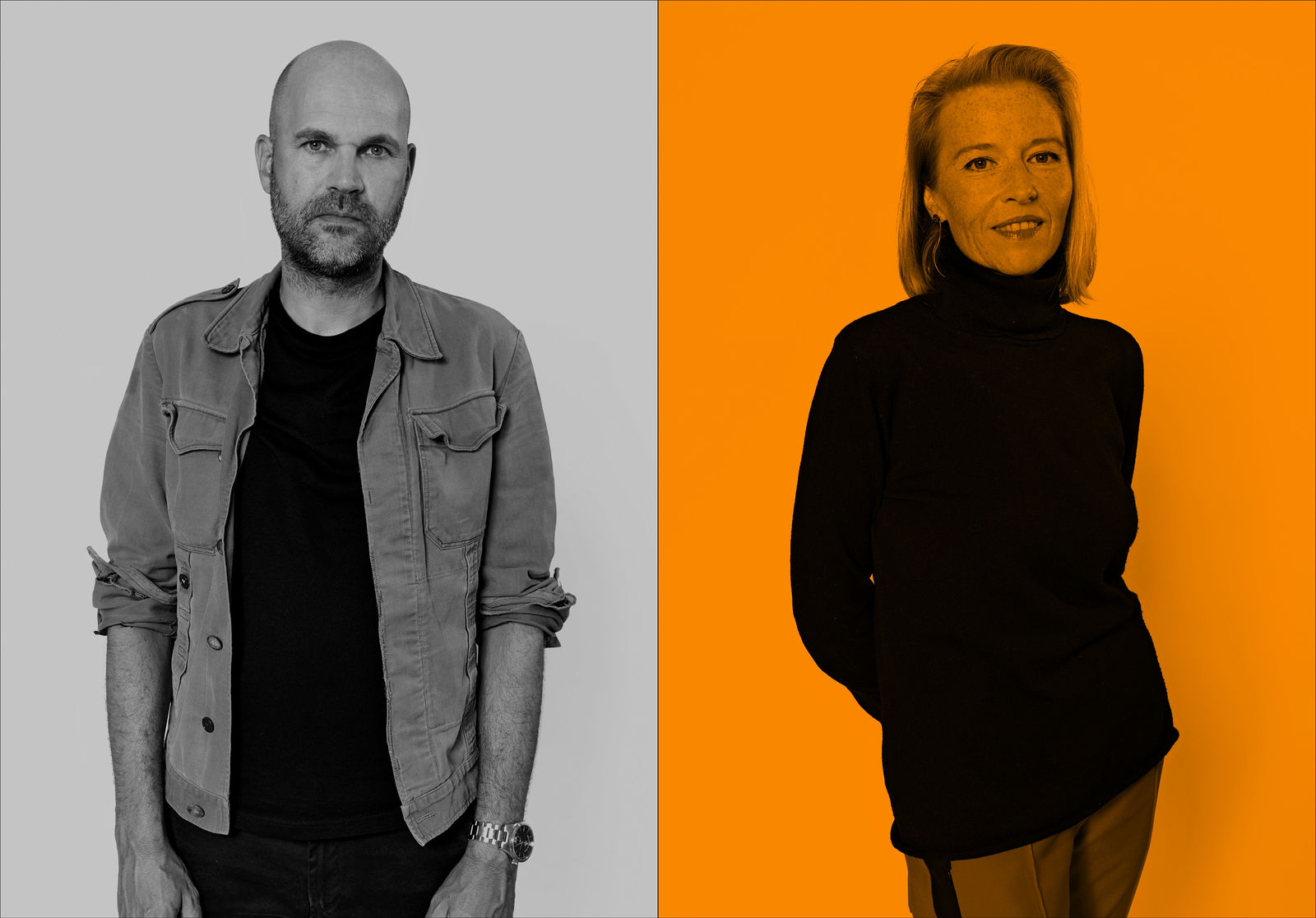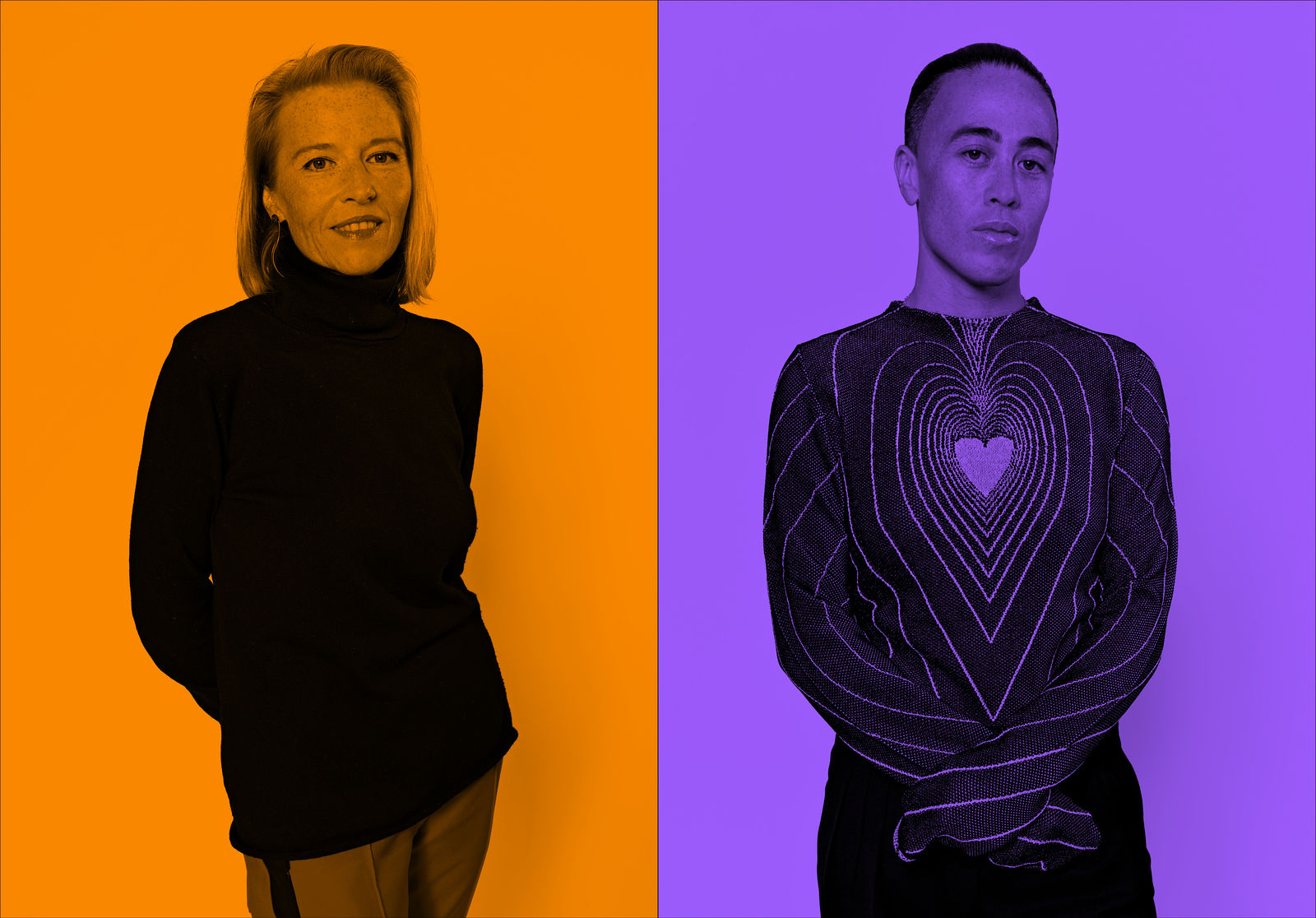Directors Talk:
Wu Tsang and Trajal Harrell
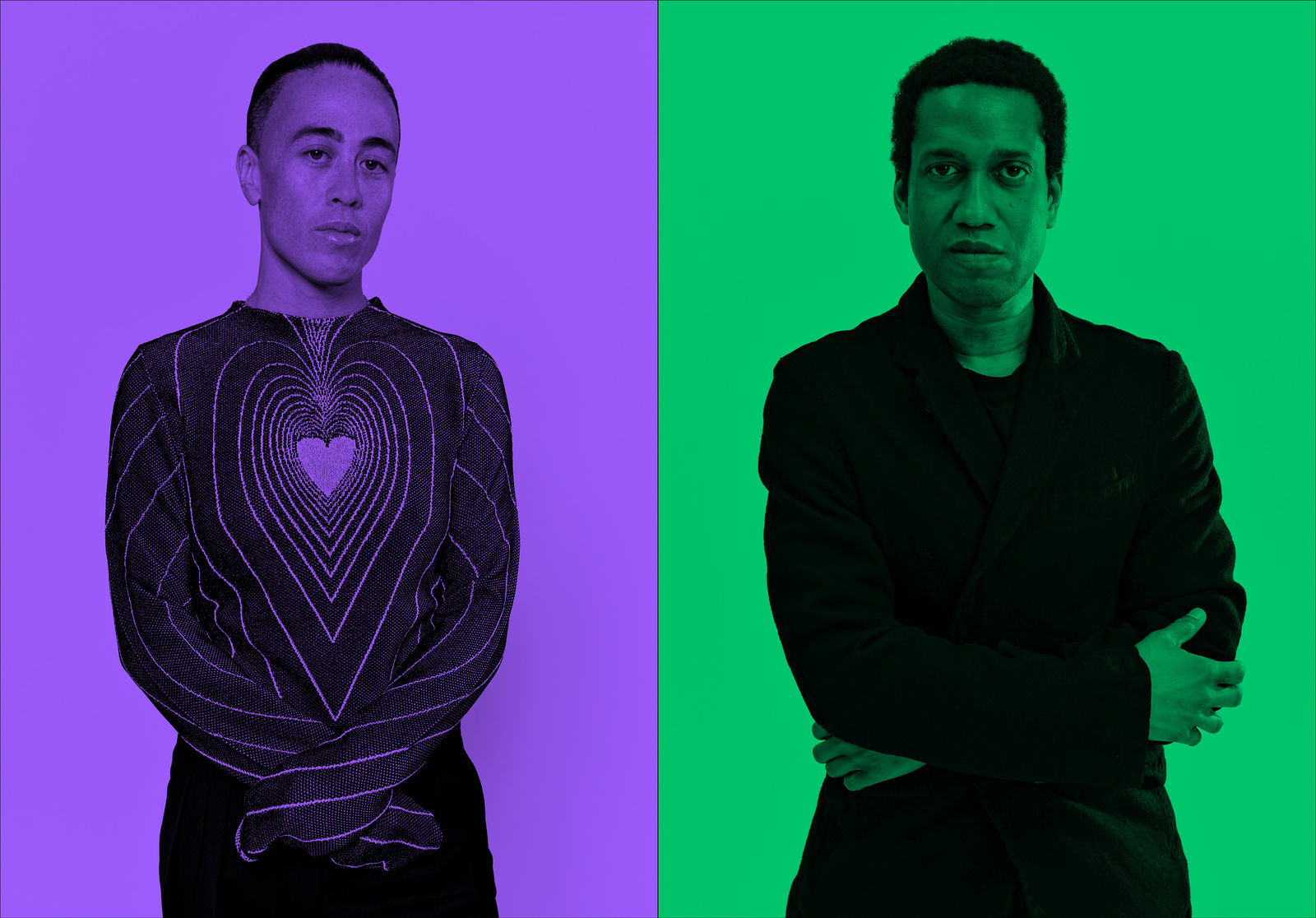
With the series Directors Talk you can bring our in-house directors Alexander Giesche, Suna Gürler, Trajal Harrell, Yana Ross, Christopher Rüping, Nicolas Stemann, Wu Tsang, and co-artistic director Benjamin von Blomberg along with you into the productions of the 2021/22 season in eight conversations. During the second lockdown they met on Zoom to talk about here, now, and tomorrow, mainly in pairs and once round-robin. The conversations are part of the season preview, which presents the 2021/2022 season and is available now in all our venues, as well as free to order online.
published on 28. August 2021
“Something will come out of it that will probably transform you.”
[14:02] Wu Tsang: Hello. Trajal Harrell: Hello. Sorry, I’m a little bit… I went to the wrong link, the one for me and Christopher. How are you? Good, how are you? Wait, so, this is recording, so that means that someone’s recording it? Yeah, it’s recording. They won’t use the recording, they’re gonna take the transcript. Right, OK. Cool. Let me tell you: I will go to Paris next week. They have invited me to do something: streaming. I’ve never done streaming. And I’ve said no to everything that was about streaming my work. But then I realized that I had had a dream to always perform in the Fondation Cartier Building. And I realized it’s the first time I’m gonna do something specifically for film or video film. Not a documentation. Not that we’ve talked so much about it, but just seeing your work has encouraged me somehow. I think there’s something about your work that to me… It’s not about dance on film even, it’s just the way you’ve incorporated movement and dance, and it is obviously transdisciplinary. But I think that its aesthetic to me has a kind of choreographic voice, and it encourages me to say: Oh, it’s possible somehow. It’s possible within this medium to reflect the same kind of aesthetic issues or desires that you have in live performance, you know? I would imagine it has something to do with your relationship to Moved by the Motion¹, this group that you have, but there’s something that you feel. That it gives a primacy to this choreographic fabric. It’s like an intuitiveness. It’s a way of dreaming, or way of valuing, about a different way of perception. Thank you, Trajal. That’s really… I feel so touched to hear you say that. Yeah, when this is over, I mean, this is a very particular thing, but I’d love to talk to you about it. That’s cool. So, what are you doing next season? That’s what we’re supposed to talk about right? 2022 is kind of mad, because I feel like everything is going into 2022. I think most of the pandemic cancellations are being pushed to 2022; but, I had decided that the first piece I’m doing is a piece called Monkey off My Back or the Cat’s Meow. It’s a piece in the Schiffbau-Halle. And I wanted to do something about nothing. So I’ve been working for 22 years, you know, it’s not a small amount of time. And I feel that whole time, I had to rationalize the work that I’ve made. I had to talk about it, I had to write a grant about it, I had to somehow rationalize it into being. And I think, luckily, because of this relationship that I have with Schauspielhaus Zürich, it’s the first time I didn’t really have to do that. And it’s my largest piece to date. I’ve never made a piece so far as for 18 or 19 people. Oh, wow! My largest so far has been twelve. I love that when you say nothingness, what that means as a fashion show.² Because when you said nothingness: in my head there was just you in the empty Halle or so. It’s really interesting what you mean by nothingness, like, no constraints or something, no conceptual, tight panties or something alike. I don’t feel obliged to communicate any idea to the audience at this point. I know it will come up, I’m sure, I know. It’s a privilege, that’s what I’m saying. There’s something political about this that I recognized that I’m in a space in which I don’t have to write a grant. Yeah, well, also just think about what will come out of it when you remove that constraint, or just that usual frontloaded pressure. Like, something will come out of it that will probably transform you, you know? I hope. And then we do the piece which was cut off by the pandemic. Which is a piece called The Deathbed of Katherine Dunham, which is part of a trilogy I have been making since 2017 called Porca Miseria. We were supposed to do it this spring and… I’m sure you know who Katherine Dunham is, yes? Yeah, well, I’ve heard you talk about the piece a bit and I’m super excited for it to finally come to the light. Well, she’s a very well-known African American choreographer. I’ll say she’s African American, because I think it was important to her, to her legacy, and to her activism. She was an activist. Her primary research was in Haitian Vodun, and she looked at a lot of Caribbean dances, as well as dances from the United States, from the South, from African American culture, and from all over the world in fact. There are two things that are important in this piece. One is that in 2006 a friend called me and told me that Dunham was dying and asked if I would like to go visit her. I did not have a relationship to her work other than I tried to take a Dunham class once and it was too hard for me. It was very, very difficult. I stopped and was, like, OK, this is not for me. But I knew that I could not pass up this chance. I knew she was an important figure in the history of dance. But I didn’t have a Katherine Dunham thing. And then the second thing was that through some research it turns out that Katherine Dunham, probably, although the history is very murky, but it seems very probable that she came in contact with Tatsumi Hijikata³ in Japan. Before he makes the first Butoh⁴ piece. And then we began to think: Oh! And it is after this day, he goes to the north of Japan, where he is from, to start studying shamanistic practices. And once you start putting two and two together, and in the first Butoh piece he strangles a chicken, which could easily be something from Vodun ritual, you start to realize: Oh, maybe he got some ideas from her, they share some thoughts, whatever, whatever, whatever. And now, once you start to see Butoh, if you stop and look at Butoh through the lense of Vodun, it completely makes sense. So, those two things, these two historical gaps are kind of what I’m dealing with. That sounds very beautiful. I mean, it’s like you imagining what they may or may not have talked about. But also, not that it matters, because it’s there. You know what I mean?! You do this in your work, too. You deal with historical figures and historical voices; you bring them into the poetry of your work. And I feel, like, there’s something of an acknowledgment of a legacy. Do you often feel in your use of figures from history, of their voices, do you feel a responsibility to their legacy? I think I have, for sure, in some of the projects I’ve done. What it brings to mind is a film that I made called Duilian, about a Chinese revolutionary, who is sort of this Joan of Arc type feminist figure in China, who is very well known, but also kind of ubiquitous. And I had done all this research on a potential intense relationship she had with this woman who changed her life, and they had this very romantic correspondence with each other for years. And I remember at the time just feeling so nervous to… I think it’s just that thing that queer filmmaking or queer artists fall into these traps around the narratives that people put on us, like, reclaiming our history or something. For me, I was never interested in that. Not interested in telling the history, but interested in feeling the impossibility of telling the history. The way queer people have to think about their history, there is almost a parallel process around imagining, and also around translation, and then reading between the lines of things. I feel that’s funny because Moby Dick, that film that I am presenting next year in the programme, has a lot of that, because one of the initial things that brought me to the novel was that it’s very queer; but I also think that’s the least interesting thing about it to me at this point, because it was just sort of the jumping off point, and it becomes a way to talk about so many other things. Maybe what it is, there is a permission to imagine that the queer relationship to history allows to kind of… Almost the responsibility to fuck it up or something. The responsibility is to not be precious with it. And to acknowledge at the same time that any kind of historical perspective is huge. I think that we cannot do this straightforward history because we know how history is operated, so we have to question our own operations and own motives in this kind of self-reflection. You have to fuck it up because it’s impossible not to, you know. Yeah. I now realized that that’s the thing I was missing: I don’t have something that I am referring to, like, I am not doing one of her dances or something, it’s just going to be The Deathbed of Katherine Dunham and it’s a specter of this ghost, really. Because I was there and it’s my experience too. I really sat there with her for a day, but I had no idea how special and important this person was in relationship to me. Because, of course, I would have asked her: Did you have an affair with Tatsumi Hijikata? She would have probably kicked me out, but I would have asked her maybe. But I think that is also beautiful. I think the beauty is that I was naïve, and I didn’t know what I was in front of, and maybe if I had known what I was in front of… Who knows?! We can’t go back. It also speaks to the looseness of temporality because it’s almost like you’re working with these different time scales, that’s her life, your encounter, your present imagining, you will have had this deep relationship to her by the time you’re done. Things have happened out of order, but it doesn’t make them less dramatic or intense. Yes, yes, yes, yes, yes. And you? You are doing Orpheus now in the fall? Orpheus is in the fall, which was supposed to be in January this year, but it got moved. And Moby Dick is the film that I am working on right now. And do I get this right that there is a live component to it? Like, the music is done live? Yeah, so, basically, it will be a film that is projected in the Pfauen and there will be a live orchestra that accompanies every show. Wow. So, it’s a hybrid, like, live film sort of experience. Actually, one of the things that inspired it, besides the fact that I knew that I wanted to do Moby Dick, I wanted to do a filmic adaptation of it, but… I was in San Francisco a couple of years ago and I actually went to a silent film festival and I saw Phantom of the Opera, the original silent film with the orchestra; and I was so inspired by the format. It really is so different than watching the movie, a regular movie. You just feel the energy of the musicians, like, it hits you and bounces off you in such a different way. Yeah. What size is the orchestra? We’re partnered with the Zürcher Kammerorchester. I think they have a max of 23 or 24 string players. But then also we will add instruments. That’s large. Yeah, it’s going to be predominantly strings. And I am working with this composer Caroline Shaw, who’s amazing. What you were saying about feeling like the Schauspielhaus gives you this permission to do something about nothingness. What I entered in that was kind of the long game; what can I do here that I couldn’t do anywhere else? And that was always opera. So, hopefully, I’ll get there. I’ve always said I wanted to make an opera, I don’t even know what that means yet. I just know that I am obsessed with the form and I love vocal based performance, so… We’ll see. When I think about opera that interests me, it does bring in all the disciplines or something, with theater, the singing, the movement, all of that stuff. So, what is the operatic? This is a question. What befits the operatic? I mean, is it the space? The traditional convention? Certain kinds of singers, voices, languages? Is it the kind of music that separates the opera from the musical? Is it just a matter of culture and how we define things in terms of, like, genre? Or is it institutional? I mean, it’s probably some combination of all the things we are talking about. It’s definitely choosing to engage with a certain legacy and history that’s quite old. Actually, the first what’s considered a modern-day opera, there were two Eurydices that were written. It’s interesting how a form has a birth or an origin point, you know, and how that’s tied to a social history and empires and patrons. Well, besides being like a childhood dream in the sense of, you know, when you’re a little kid and you try to imagine the most magnificent thing you could possibly ever do; and for me that was opera. Just like in a really uneducated way, it seemed like the most grand art form to me. Then I also studied singing opera for years and was very interested in the technique, the Belcanto technique being one. And I’m sure there’s other traditions of singing that do this, but in particular this one for me felt very linked to drag performance actually, because it was about creating an armature with your body for air to breath, and air to create sound in this way, where you become a channel for something, a kind of ethereal femininity. And it’s just super saturated with intensity, I think. For me it is also about the intensity. The level of the drama, like you were saying. You know, the scale of it. I just have to put one thing in the oven. I’ll be right back. No problem. Sorry, dear, I just… I feel like we’ve talked about a lot. We’re done. Great to see you. Have fun with Christopher. Tell him I said hi. OK, tell everyone I say hello. Lots of love, bye-bye! Bye! [14:54]
1 Moved by the Motion includes ensemble members Tosh Basco, Josh Johnson, Asma Maroof, and in-house director Wu Tsang.
2 Fashion is an important inspiration for Harrell. In most of his works, high fashion pieces play a major part as costumes; the form of the evenings is also often inspired by fashion shows, by the catwalk, by the artificial gait of the mannequins and their attitude.
3 Tatsumi Hijikata (1928–1986) was a Japanese choreographer and co-founder of Butoh together with Kazuo Ōno.
4 The Japanese expressive dance Butoh (Japanese: “dance of darkness”) emerged in the 1960s and strives for an original and direct expression of the human, which is closely linked to the earth, the transient and death.
